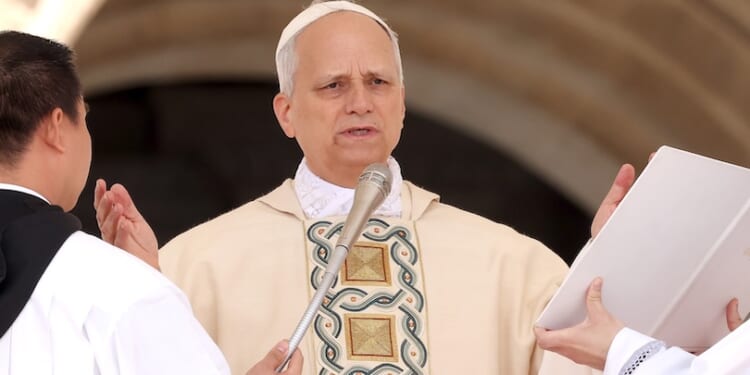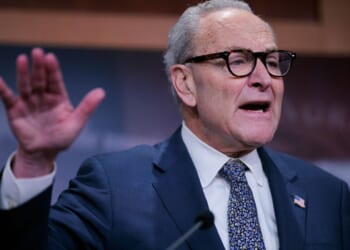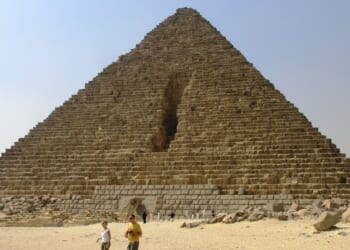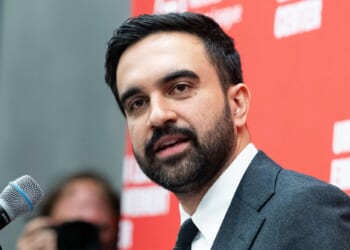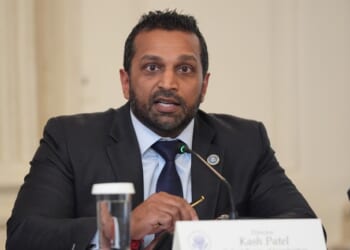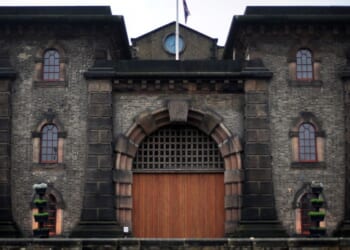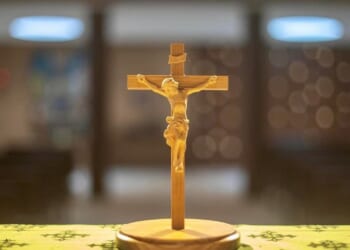(LifeSiteNews) — In Leo XIV’s latest “Pope Video,” he urged believers of different religions to collaborate for “peace, justice, and human fraternity.”
The two-minute video, which repeats this list twice, marks the 60th anniversary of Nostra Aetate, described in the YouTube caption as the Declaration that “transformed the Catholic Church’s relationships with other religions.”
Released by the Vatican-affiliated “Pope’s Worldwide Prayer Network,” the October message addressed Christ as “You, who in diversity are one,” and prayed that “help us to recognize ourselves as brothers and sisters, called to live, pray, work, and dream together.”
The video features footage from John Paul II’s 1986 interreligious prayer meeting in Assisi along with later meetings under Benedict XVI and Francis. It also includes scenes from interreligious ceremonies at the Vatican as well as religious representatives performing their respective rites.
It concludes with scenes of religious representatives planting trees as Leo prays “that believers in different religious traditions might work together, beyond our differences.”
Analysis
The video’s emphasis on fraternity recalls Francis’ controversial first “Pope Video,” which featured a similar prayer intention and affirmed that “there is only one certainty,” namely that all men are children of God.
While it is true that all men are brothers on the natural level, the Church teaches that the sonship and fraternity of her members is of a different and higher degree – and that any true brotherhood of man must be based on something higher than nature. In Notre charge apostolique, Pope St. Pius X affirmed the importance of fraternity but stressed that it must be based on the truth, morality, and the supernatural love of God in Jesus Christ.
Because of this, St. Pius X criticized the naturalist notion of fraternity founded “beyond all philosophies and religions, on the mere notion of humanity.” Calling for Catholics to do good to all men, he nonetheless emphasized that “love for our neighbor flows from our love of God, who is Father to all, and goal of the whole human family; and in Jesus Christ whose members we are.”
“In doing good to others,” St. Pius X said of this true fraternity that “we are doing good to Jesus Christ Himself.” This is why he states that “there is no genuine fraternity outside Christian charity,” and that attempts to found universal love of neighbor on any other basis “is sheer illusion, sterile and fleeting.”
Leo’s reference to “the dream of the common good” also invoked St. Pius X’s frequent use of the word “dreams” in the same encyclical, in which he classified the vision of a naturalist human fraternity without regard for creed as among “the unremitting attacks of insane dreamers.”
St. Pius X demanded that all social action be Catholic in principle and under ecclesiastical authority, rejecting any exclusion of the Church and any notion of parity with other religions. He does not endorse inter-religious cooperation, except in narrowly civil matters, and only when Catholic control and doctrine remain intact.
The video’s call to “recognize what unites us” – repeating Leo XIV’s June comments to an Ecumenical Symposium – also recalls the 1949 decree of the Holy Office (now known as the DDF). It commanded Catholics to “be on guard” against “the false pretext that more attention should be paid to the points on which we agree than to those on which we differ.”
The instruction warned that this would lead to “a dangerous indifferentism (…) especially among persons whose training in theology is not deep and whose practice of their faith is not very strong.” It also forbade joint public prayers (communicatio in sacris) with non-Catholics.
The video contrasts sharply with Christ’s warning of perpetual hostility between the Church and “the world” (John 14-16). He also said:
Do not think that I came to send peace upon earth: I came not to send peace, but the sword.
For I came to set a man at variance against his father, and the daughter against her mother, and the daughter in law against her mother in law. (Matt. 10:35)
To conquer the world and bring it back into communion with the Holy Trinity, Christ instituted the Apostolic Hierarchy, sending the Apostles to “make disciples of all nations” and giving them his own authority to teach, rule, and sanctify all men.
Echoing comments from his inauguration (May 18, 2025), where he caricatured the traditional exercise of authority as “autocracy,” Leo said, “Sometimes, religions, instead of uniting us, become a cause of confrontation,” and prayed that “religions” would “not be used as weapons or walls.” These remarks reflect a markedly different vision to that presented by Christ and carried out through the Church’s apostolic mandate.
In short, the video cements the central place of interreligious dialogue in Vatican messaging, linking Leo XIV to a legacy that began with Nostra Aetate and developed through successive gatherings and statements. The October campaign situates Leo XIV squarely in this trajectory, presenting multiple religions as “bridges and prophecy” capable of advancing the “common good” and acting as “yeast of unity in a fragmented world.”

